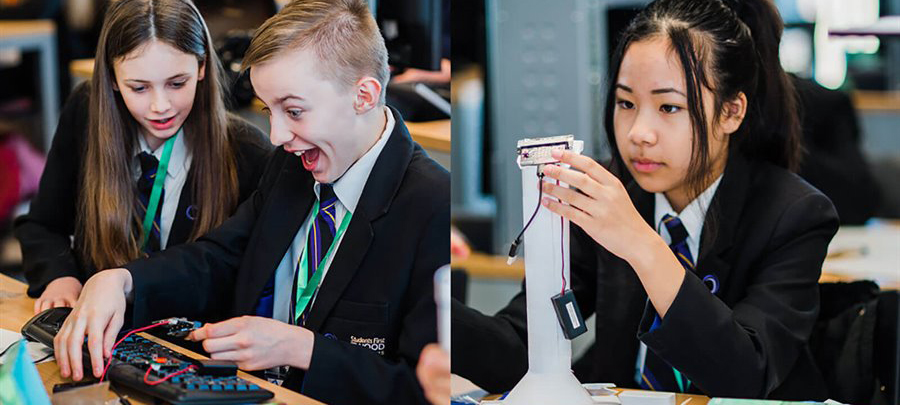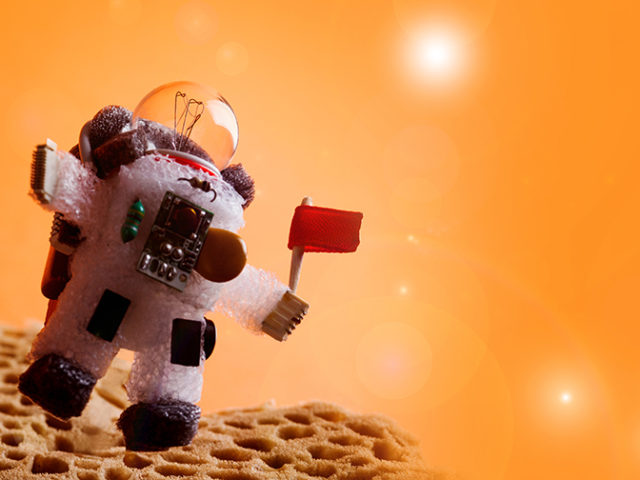Since May 2018 the Arm School Program (ASP) has been developing innovative educational resources to better support teachers and learners studying Computer Science.
Education is a complex and fractious market to navigate with many stakeholders and divergent needs. This is complicated further by the extreme time pressures on teachers and the sheer volume of non-specialist staff, especially in subjects such as Computer Science in secondary schools. In addition to this, the recent changes in subject content and assessment have left teachers struggling to look forward and devise innovative and engaging resources as well as developing different teaching approaches due to the demands placed on them.
Pedagogical approaches
Educational research shows that an effective way to teach STEM is through a constructivist approach or ‘learning by doing’ while still providing differentiated learning scaffolding as well as relevant and challenging stretch tasks. Project Based Learning (PBL) is a fantastic way to teach STEM in a practical and cross-curricula fashion, but teachers simply don’t have time to create the resources to facilitate this style of learning as it is very resource hungry and time-consuming to produce to a high quality.
This pedagogical approach (PBL) requires an authentic context to make it relevant and engaging to learners, and this is where industry can help by providing modern, relevant and cutting-edge contexts to form the basis of projects.
micro: course
The first resource I produced was a series of lessons using the PBL approach but framed in a typical lesson format with a lesson plan. These projects/lessons were based on the micro:bit and took learners from the basics of creating a simple block-based programme to programming in micropython. The projects all involved an authentic context which provided a real world and relatable problem the learners had to solve. They were also given a ‘building’ element where learners had to make a physical product to meet the given success criteria which contained a micro:bit that they programmed to serve a specific need and solve a specific set of problems.
We tested these resources at various schools and events, and one of the projects really captured the creativity inherent in this style of teaching. This project was called the ‘micro:pet’ where learners had to create and build an interactive pet to help entertain children in hospitals.
The full micro:course is freely available and can be used as individual lessons or as more extended activities for clubs and educational groups (Scouts etc.) as well as for volunteering interventions with Team Arm. These resources make delivering engaging and creative educational sessions extremely simple as everything you need is provided in an easy to use format.
We are currently developing a mixture of different content formats to service the various approaches typically used in schools. While there is a consistent PBL thematic structure throughout, the delivery and presentational approaches are designed to be fluid and can (and should) be used in a blended fashion to cater to different learners’ abilities and learning styles. So far, the content falls into the following distinct content types:
- Teaching Material – traditional format of teaching and learning material consisting of a scheme of work (SOW), lesson plans, slide decks, and activities for every lesson
- Didactic Content – a collection of resources best suited for independent study
- Continued Professional Development (CPD) – training for teachers on platform, pedagogy, resources, technology
- Interactive content – a modern approach using the Virtual Learning environment (VLE) functionality that consists of interactive video content and animation to engage and inspire learners as well as providing rich progression data.
These content types allow teachers to engage with our resources fluidly with a low barrier to entry as more traditional teachers will be attracted to the teaching material format and as they spend more time on the platform may be attracted to the more interactive features it has to offer. The interactive content is the most versatile and engaging content and can be used independently or as part of a blended learning approach. Using the interactive content also allows an analysis of the learner’s progression through the topics and gives an accurate and real-time view of their understanding.
What is blended learning?
Blended learning is a pedagogical approach where we use a mixture of online and physical resources in varying quantities to best suit the learner’s needs. It allows the teacher to adapt the delivery to suit the level of support required by the class and intervene appropriately while keeping learners in their zone of proximal development (ZDP).
Theoretical underpinnings: a modern Constructivist approach
Classic constructivism is rooted in psychology and posits that learners ‘construct’ knowledge through experience (Piaget). This is applied in various ways, from leaving learners to discover the knowledge independently to more prescriptive approaches that engineer contexts and learning scaffolding to guide learners through their learning experience. This more structured approach is how I have developed the ASP teaching and learning resources where we provide learners with a context, a problem and success criteria that they can solve independently using the provided resources. This approach caters to all learners and doesn’t leave the learning to chance.
Vygotsky characterized this process using what he describes as the ‘zone of proximal development’ which in practice means challenging learners enough to stretch them and ultimately enhancing their learning. This concept is important as it highlights the need for effective differentiation in the resources created, ensuring learners are sufficiently supported but not to remove the challenge. Therefore, all ASP resources include stretch tasks to cater for more able learners as well as having suitably scaffolded tasks to ensure engagement from weaker learners.
Bloom’s taxonomy is also important to consider here as his hierarchical model of learning objectives captures the learner journey of PBL from knowledge through to evaluation and all steps are catered for in the PBL pedagogy.
Trialling in schools
To ensure the efficacy of our approach, we are conducting large scale trials of our content in schools across the UK working with Multi Academy Trusts (MATs) to gather feedback and usage data to iteratively improve our resources. Teachers will be onboarded on the platform and trained on how to use the resources effectively as well as exploring the theoretical underpinnings for the pedagogical approach. We will train teachers on how to administer the VLE and how to use and interpret the data provided by the VLE dashboard to maximize progression and use a data-driven approach to formative assessment.




